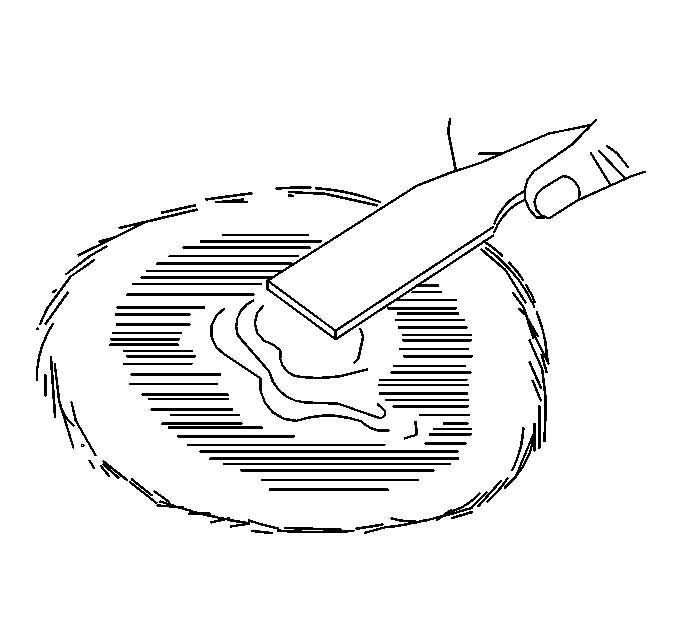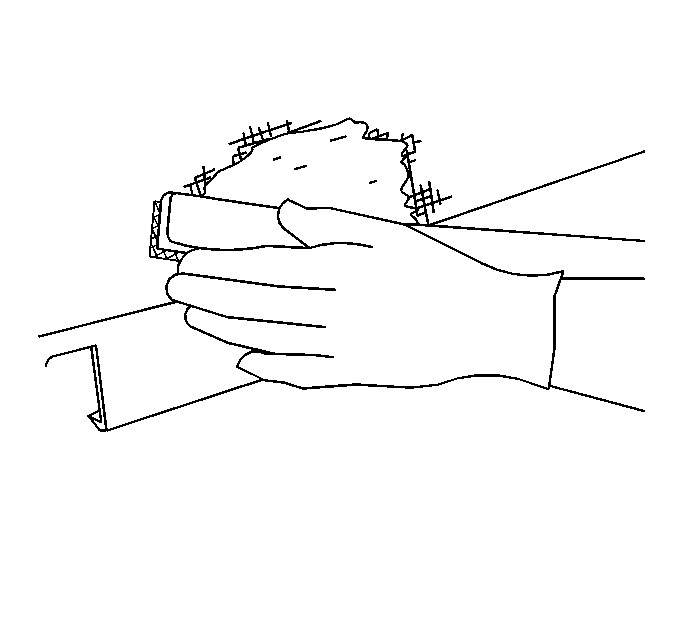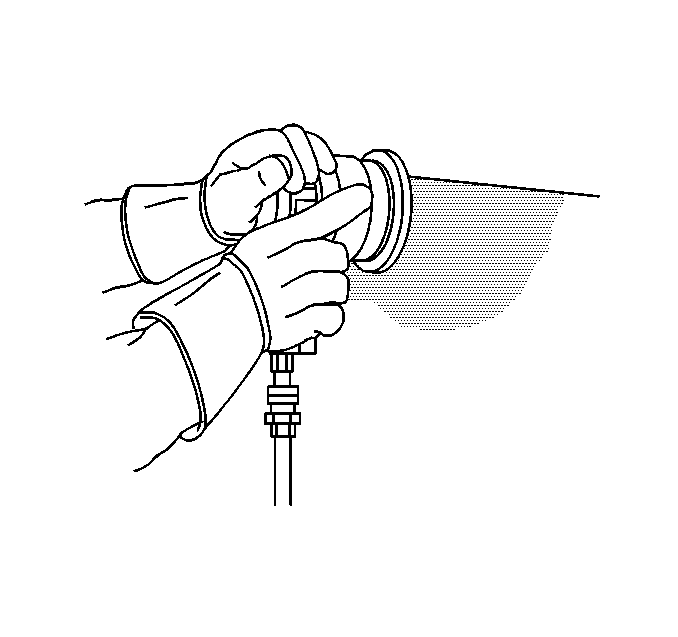For 1990-2009 cars only
When the fiberglass laminate is not pierced through or the damage extensive, the damaged area can be repaired using the following procedure:
- Clean and inspect the damaged area. Refer to General Plastic Repair .
- Finish the cleanup using a tack rag and air.
- Sand the damaged area down to the fiberglass laminate.
- Grind or file the edges of the damaged area in order to form a dish.
- Scuff sand the area surrounding the damaged area in order to provide a good bonding surface.
- Clean around the edge of the inside surface with a 50/50 mixture of isopropyl alcohol and water by volume on a dampened lint free cloth.
- Finish the cleanup using a tack rag and air.
- Mix the recommended repair material. Refer to Flexible Plastic Part Repair Materials or Rigid Plastic Part Repair Materials .
- Apply the repair material to the damaged area until the repair is slightly higher than the surrounding area.
- Cure the repair material. Follow the manufacturers recommendations.
- Rough out the surface using a #80 grit disc on a D A sander or a curved-tooth body file.
- Apply a polyester type material, in order to provide a uniform surface for sanding, such as Sikkens® Polystop LP, or equivalent.
- Finish sanding with a dual action random orbital sander.
- Prime and refinish as necessary. Refer to the GM Approved Refinish Materials book GM P/N GM4901M-D which identifies the paint systems you may use. Always refer to the latest revision of the 4901M-D book. This operation is to be performed prior to the application of sealers, waxes, deadeners, and antirust compounds. Follow the procedures recommended by the material manufacturer.
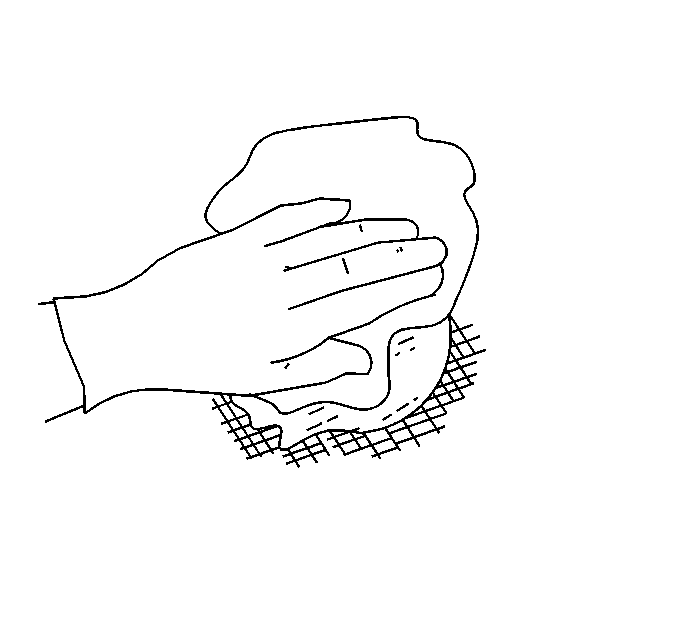
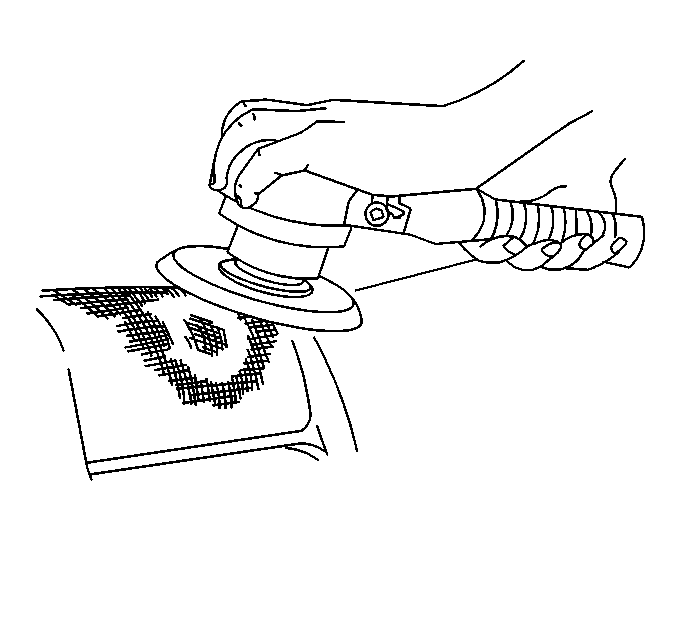
Use a sander with a vacuum attachment in order to minimize dust.
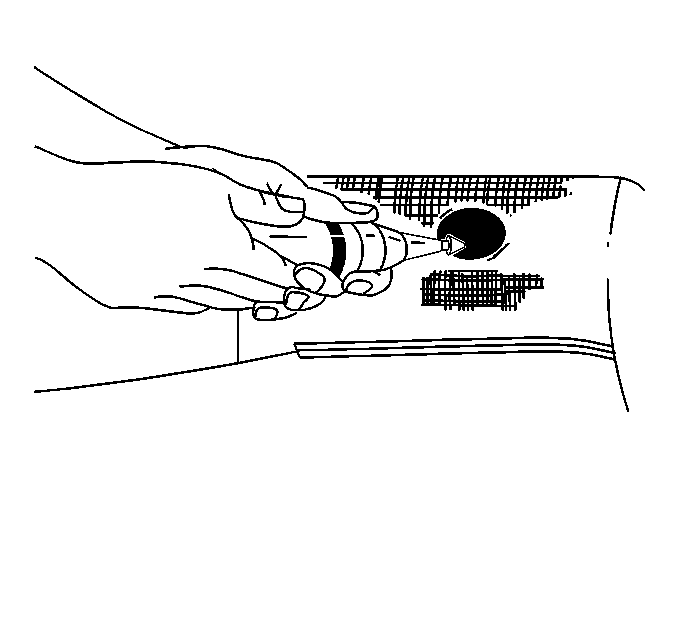
The side of the dish should have a pitch for a maximum bonding surface.


